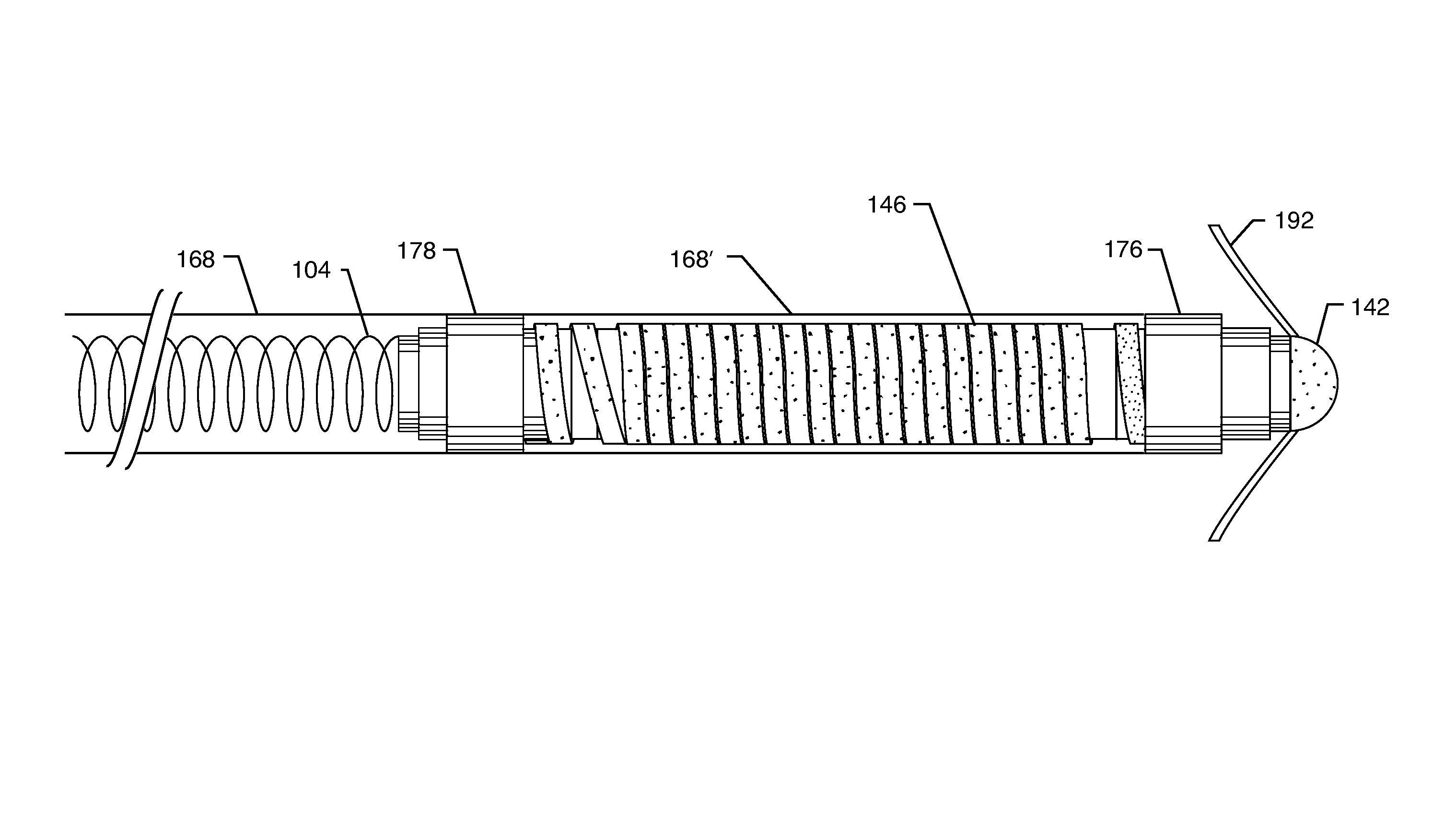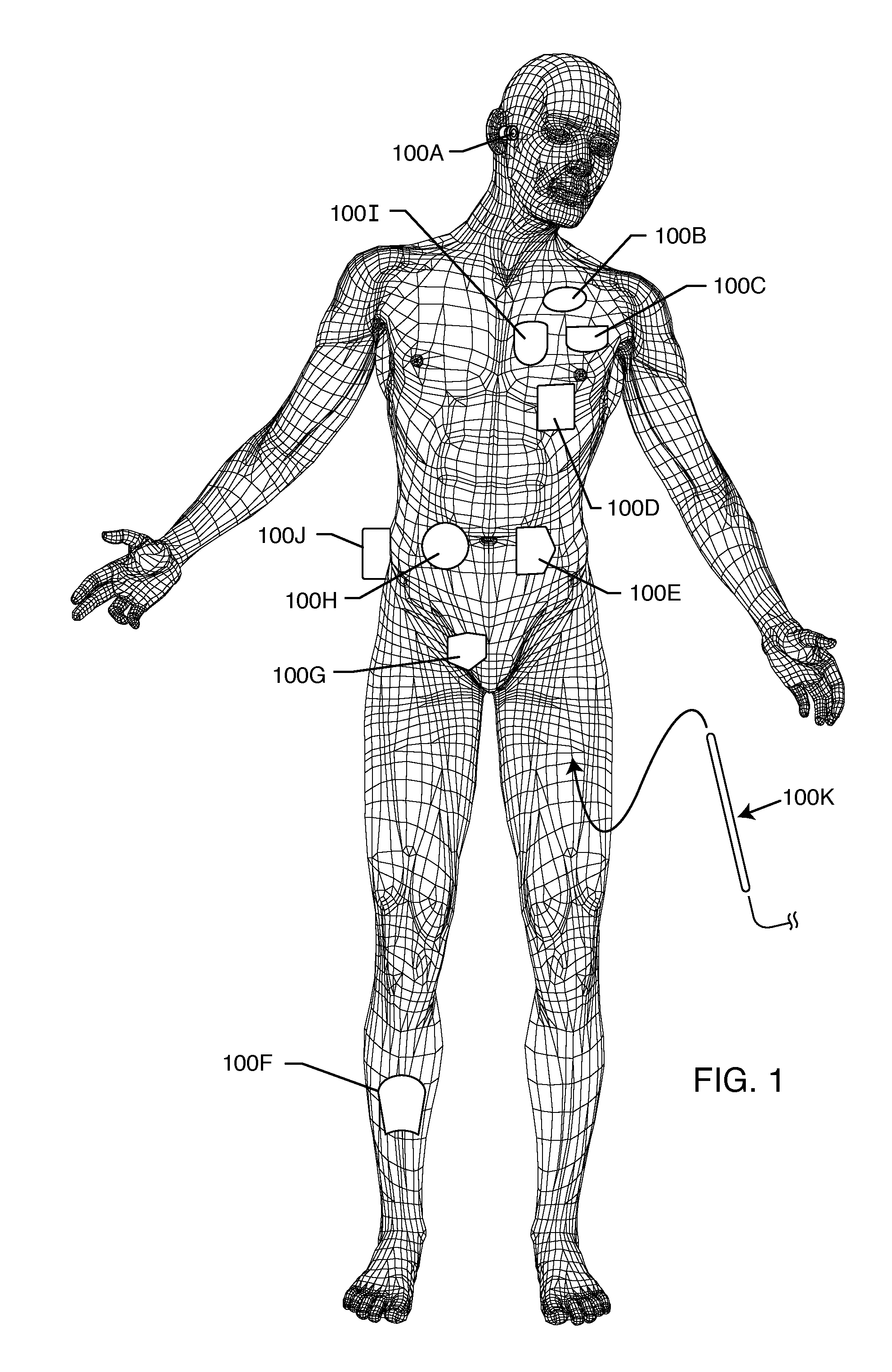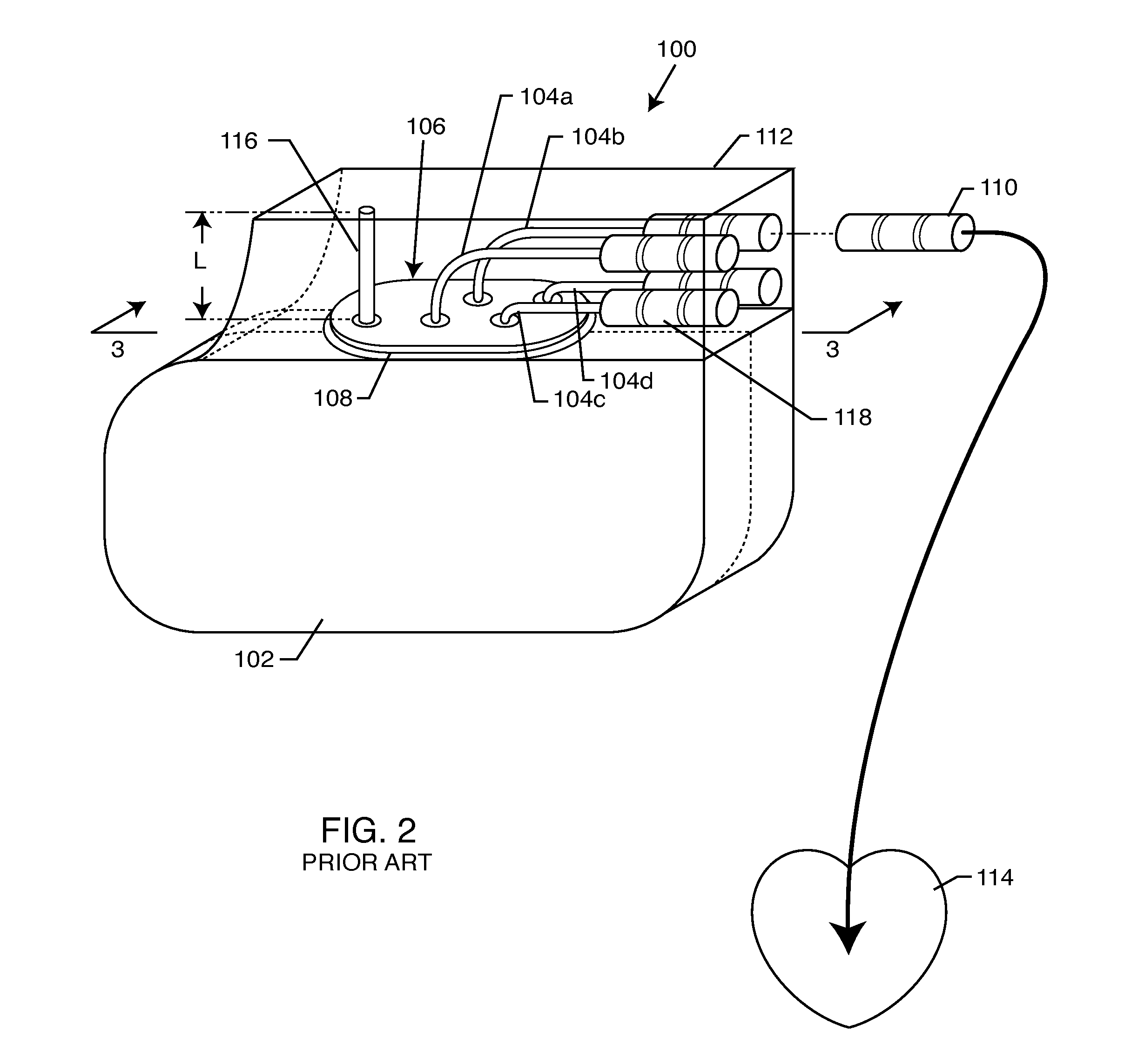Implantable lead bandstop filter employing an inductive coil with parasitic capacitance to enhance MRI compatibility of active medical devices
a technology of inductive coils and active medical devices, which is applied in the field of inductive coilparasitic capacitance bandstop filter assemblies, can solve the problems of distal tip electrode overheating at inappropriate times, presenting a very high impedance, etc., and achieves rapid imagery
- Summary
- Abstract
- Description
- Claims
- Application Information
AI Technical Summary
Benefits of technology
Problems solved by technology
Method used
Image
Examples
Embodiment Construction
[0113]The present invention is directed to medical lead systems comprising an implantable lead having a proximal end and an electrode in contact with biological cells at a distal end. At least one bandstop filter is associated with a lead conductor for attenuating current flow through the lead over a range of frequencies. The bandstop filter has an overall circuit Q wherein the resultant 3 dB bandwidth is at least 10 kHz and where the bandstop filter comprises a capacitance in parallel with an inductance, wherein values of capacitance and inductance are selected such that the bandstop filter is resonant at a selected center frequency.
[0114]As used herein, the term “bandwidth” refers to an attenuation or insertion loss plot measured (or calculated) in a balanced 50-ohm system (50-ohm source and load impedance). The best method is by swept measurements in a 50-ohm spectrum or network analyzer system with proper attention to “thru” and “short” calibrations. The most accurate measuremen...
PUM
 Login to View More
Login to View More Abstract
Description
Claims
Application Information
 Login to View More
Login to View More - R&D
- Intellectual Property
- Life Sciences
- Materials
- Tech Scout
- Unparalleled Data Quality
- Higher Quality Content
- 60% Fewer Hallucinations
Browse by: Latest US Patents, China's latest patents, Technical Efficacy Thesaurus, Application Domain, Technology Topic, Popular Technical Reports.
© 2025 PatSnap. All rights reserved.Legal|Privacy policy|Modern Slavery Act Transparency Statement|Sitemap|About US| Contact US: help@patsnap.com



